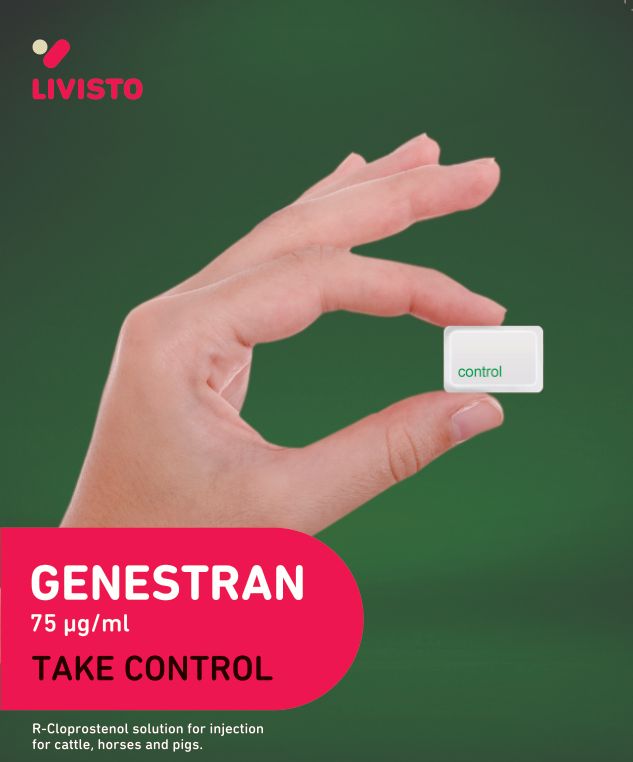Benefits of farrowing synchronization in sows
The farrowing synchronization using synthetic analogues of prostaglandin F2α plays a considerable role in the daily routine of sow herds. In this article we are going to break down the benefits of its use, both at the production and workers’ level.
Hyperprolific maternal line females commonly have 14–16 piglets born alive and piglet pre-weaning mortality ranges from 11 to 24% predominantly in the first five days of age, therefore, there is renewed interest in attendance and assistance at farrowing (1).
Moreover, stillbirth rate increases as litter size rises. In addition, larger litters generally mean smaller and weaker pigs and the rate of stillborn piglets rises as duration of farrowing and interval between births go up (1).
Synchronization eases the observation, recording and husbandry tasks required for the sow and neonatal piglets, facilitates an effective cross-fostering system and, when there is a record of problems, reduces the frequency of dystocias and MMA type disorders (2). Furthermore, this management facilitates batch farrowing production system and, in consequence, the all-in all-out principle.
When is it recommended to apply farrowing synchronization in a sow herd?
It is recommended to induce/synchronize births:
- When sows on the herd usually farrow at night.

- In the event of a high percentage of stillbirths due to problems during farrowing.
- On farms with batch management to concentrate farrowings in a few days and thus be able to wean the sows and piglets with the same days of lactation.
- As long as there can be at least one worker on the farm focused on farrowing care to avoid possible birth problems. The aim of the synchronization is, in part, that births take place when there is someone on the farm.
How to synchronize farrowings?
The induction/synchronization of the farrowings is done with the administration of synthetic analogues of prostaglandin F2α such as cloprostenol.
For Wähner and Hühn (2003), in practice, the most secure date for injection is the 114th day of gestation.
In the case of Genestran (3), only one intramuscular administration of 1 ml of the product is needed what has to be done from day 113 of gestation (the first day of gestation is considered to be the last day of artificial insemination), 24-36 hours prior to the desired date.
When a farm considers synchronizing farrowings, it should first take data on the natural length of gestation of sows, both gilts and multiparous. And then, with these data from the farm in question, it is when it is necessary to consider synchronizing farrowings so that the sows stop on their expected day of natural farrowing, which is the goal for most sows.
It is essential to remember that the natural farrowing of the sow should be brought forward at most 24 or 48 hours to avoid adverse effects (which we will discuss later in this post).
Farrowing supervision/birth assistance includes the following practices (1):
- Preventing savaging of piglets by the sow.
- Manually delivering piglets when the birth interval becomes longer than 30 min.
- Removing placental envelopes around piglets and clearing airways of piglets to prevent suffocation and crushing of piglets.
- Ligating the umbilical cord.
- Towel drying and positioning piglets under a heat lamp immediately after birth to prevent chilling.
- Placing low weight, low-viability piglets in a heated crib or box away from the sow. It is crucial to provide oral supplements to piglets, mainly to provide them with energy, such as those based on medium-chain fatty acids.
- Feeding low-viability pigs colostrum orally if necessary.
- “Split suckling” or cross-fostering litters to ensure piglets from large litters consume adequate colostrum.
- Administering fluids to dehydrated piglets, either orally or subcutaneously.
- Taping legs of splay-legged piglets together.
The main benefits of farrowing synchronization for the…
1. Sows
Parturition induction on its own decreases variability in gestation length, facilitating the timing of birth, which makes it easier to look after the sow and newborn piglets during the birth (4,5).
The synchronized induction of parturition in sows prevents the unwanted extension of gestations beyond 116 days (2).
Additionally, a small variation in farrowing time fits better into the strict time schedule of sow batch-management systems (4):
- Pigs can be weaned in time allowing sufficient time for hygienic measures.
- Insemination period is shortened.
When induced at day 113 of gestation, Decaluwe et al. (2012) reported that colostrum, compared to the non-induced control group, had:
- Higher lactose.
- Lower ash and protein.
- Equal concentrations of immunoglobulin G.
But, on the other hand, a wrong farrowing induction management is associated with lower percentage of fat, protein and globulin in colostrum (4).
2. Piglets
Additionally to look after the newborn piglets during the birth, farrowing synchronization (4,5) also leads to:
- Lower number of stillbirths and neonatal mortality.
- An easier control on the piglets’ colostrum intake and an increase of the total colostrum intake by whole litter. We have previously talked in depth about the importance of the colostrum in this article.
- Neonatal assistance: cross-fostering (and colostrum intake supervision) increase the chances for survival of later born and smaller piglets.
But, if farrowing induction is not done properly, it may lead to premature delivery of piglets (4). Such piglets have a:
- Higher risk of dying.
- Lower birth weight.
- Lower growth during the first three weeks of age.
- Higher incidence of neonatal mortality and of splay leg.
3. Herd management and economy
More uniform time of parturition as a consequence of induction enables us to concentrate the majority of farrowings into the working hours of the farm staff (5), which may lead to more weaned piglets (4).
The practical inclusion of this reproductive management tool also allows for “farrowing free” weekends or weekdays to be planned for (2).
Kraeling and Webel (2015) shared the results of a previous study that had revealed that:
- Number of stillbirths/litter and number of pre-weaning deaths/litter were significantly greater for unsupervised sows than for supervised sows.
- Total weaned/litter was less for unsupervised sows than for supervised sows.
Conclusions
It has been proved that farrowing synchronization using synthetic analogues of prostaglandin F2α, such as cloprostenol, eases not only the herd management but also, and most important, the sow and piglets management at this crucial moment.
References
- Kraeling RR and Webel SK. Current strategies for reproductive management of gilts and sows in North America. Kraeling and Webel Journal of Animal Science and Biotechnology 2015, 6:3. doi: 10.1186/2049-1891-6-3.
- Wähner W and Hühn U. Improving management for the benefit of people and pigs – synchronized farrowing in the pig. Biotechnology in Animal Husbandry, 2003, 19, 1-9; 1-92. http://www.journals4free.com/link.jsp?l=13442975.
- Genestran: https://www.livisto.es/es/products/product/genestran-75-microgramos-ml/2643.
- Decaluwe R, Janssens GPJ, Declerck I, et al. Induction of parturition in the sow. Vlaams Diergeneeskundig Tijdschrift, 2012, 81.
- Hlavová K, Kudláčková H and Faldyna M. The impact of parturition induction with cloprostenol on immunological parameters in the sow colostrum. Porc Health Manag 6, 35 (2020). doi: 10.1186/s40813-020-00174-y.












